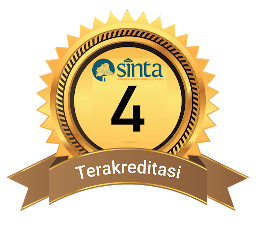Analisis Kemampuan Literasi Sains Mahasiswa Calon Guru Kimia pada Materi Laju Reaksi
DOI:
10.29303/cep.v7i2.7274Published:
2024-11-30Issue:
Vol. 7 No. 2 (2024): Edisi NovemberKeywords:
Science Literacy, Pre-Service Chemistry Teacher, Reaction RateArticles
Downloads
How to Cite
Abstract
This research is descriptive research with a quantitative approach aimed at describing the scientific literacy abilities of prospective chemistry teacher students on reaction rate. This research involved 50 students as samples with a sampling technique using purposive sampling. The data collection technique uses a test instrument similar to PISA based on scientific literacy which is analyzed using descriptive statistics. From there validator the instrument of validity obtained was 0.803 for the content aspect and 0.747 for the language aspect and the reliability score obtained was 0.65 with high information. Based on the research results obtained, each aspect of scientific literacy received a low category. The results of this research indicate that the science literacy skill of the pre-service chemistry teacher students still need to be improved so that each indicator reaches sufficient numbers and overall scientific literacy abilities become better. Students' science literacy skill were obtained from four aspects of science literacy skill, including the knowledge aspect (34.86%), the context aspect (68.86%), the competency aspect (52.26%), and the attitude aspect (75.1%) so that it was obtained the average science literacy skill of the pre-service chemistry teacher students in the overall reaction rate is 57.78% in the low category.
References
Ardianto, D., & Rubini, B. (2016). Comparison of students’ scientific literacy in integrated science learning through model of guided discovery and problem based learning. Jurnal Pendidikan IPA Indonesia, 5(1), 31–37.
Arikunto, S. (2016). Prosedur Penelitian Suatu Pendekatan Praktek. Jakarta: Rineka Cipta.
Bahria. (2015). Model Pembelajaran Berbasis Masalah (PJBL) terhadap Peningkatan Literasi Calon Guru Kimia. Prosiding: Puslitjak Balitbang Kemdikbud.
Bashooir, K., & Supahar. (2018). Validitas dan Reliabilitas Instrumen Asesmen Kinerja Literasi Sains Pelajaran Fisika Berbasis STEM. Jurnal Penelitian dan Evaluasi Pendidikan, 22(2), 219-230.
Imansari, M., Sumarni, W., & Sudarmin. (2018). Analisis Literasi Kimia Peserta Didik Melalui Pembelajaran Inkuiri Terbimbing Bermuatan Etnosains. Jurnal Inovasi Pendidikan Kimia, 12(2), 2201–2211.
Laksono, P. J. (2018). Studi Kemampuan Literasi Kimia Mahasiswa Pendidikan Kimia pada Materi Pengelolaan Limbah. Orbital: Jurnal Pendidikan Kimia, 2(1), 1–12.
Linarwati, M., Fathoni, A., & Minarsih, M. (2016). Studi Deskriptif Pelatihan dan Pengembangan Sumberdaya Manusia serta Penggunaan Metode Behavioral Event Interview dalam Merekrut Karyawan Baru di Bank Mega Cabang Kudus. Journal of Management, 2(2), 1-8.
Narut, Y. F., & Supardi, K. (2019). Literasi Sains Peserta Didik dalam Pembelajaran IPA di Indonesia. Jurnal Inovasi Pendidikan Dasar, 3(1), 64.
OECD. (2015). PISA 2015 Assessment and Analytical Framework: Science, Reading Mathematical and Financial Literacy. Paris: OECD Publishing.
OECD. (2016). PISA for Assessment and Analytical Framework: Science, Reading, Mathematics and Financial Literacy. Paris: OECD Publishing.
OECD. (2018). PISA for Assessment and Analytical Framework: Reading, Mathematics and Science. Paris: OECD Publishing.
OECD. (2023). PISA 2022 Results: the State of Learning and Equity in Education. Paris: OECD Publishing.
Pahrudin, A., Irwandani, Triyana, E., Oktarisa, Y., & Anwar, C. (2019). The analysis of pre-service physics teachers in scientific literacy: Focus on the competence and knowledge aspects. Jurnal Pendidikan IPA Indonesia, 8(1), 52–62.
Purwanto. (2011). Evaluasi Hasil Belajar. Pustaka Pelajar.
Rahmayanti, S. P., Andayani, Y., & Idrus, S. W. A. (2021). Studi Kemampuan Literasi Sains Mahasiswa Pendidikan Kimia Terkait Etnosains Bau Nyale. Jurnal Pijar MIPA, 16(3). 326-332.
Sugiyono. (2016). Metode Penelitian Kuantitatif, Kualitatif, dan R&D. Bandung: Alfabeta.
Sulistiawati. (2015). Analisis Pemahaman Literasi Sains Mahasiswa yang Mengambil Mata Kuliah IPA Terpadu Menggunakan Contoh Soal PISA 2009. Jurnal Saintek, 12(1), 23.
Suryati., Khery, Y., Nufida, A. B., Hendrawani., & Rahayu, S. (2020). Identifikasi Kompetensi Literasi Sains Calon Guru Kimia. Jurnal Zarah, 8(1), 50-55.
Sutrisna, Nana. (2021). Analisis Kemampuan Literasi Sains Peserta Didik SMA di Kota Sungai Penuh. Jurnal Inovasi Penelitian, 1(12), 2684.
Yuliati. (2017). Literasi Sains dalam Pembelajaran Ipa. Jurnal Cakrawala Pendas, 53(9), 1689–1699.
Yusup, F. (2018). Uji Validitas dan Reliabilitas Instrumen Penelitian Kuantitatif. Jurnal Tarbiyah: Jurnal Ilmiah Kependidikan, 7(1), 17-23.
Author Biography
Dwi Auliya Ariska, Pendidikan Kimia, Universitas Mataram
License
Copyright (c) 2024 Dwi Auliya Ariska Dwi, Eka Junaidi, Ermia Hidayanti

This work is licensed under a Creative Commons Attribution-ShareAlike 4.0 International License.
Authors who publish with Chemistry Education Practice agree to the following terms:
- Authors retain copyright and grant the journal right of first publication with the work simultaneously licensed under a Creative Commons Attribution License 4.0 International License (CC-BY-SA License). This license allows authors to use all articles, data sets, graphics, and appendices in data mining applications, search engines, web sites, blogs, and other platforms by providing an appropriate reference. The journal allows the author(s) to hold the copyright without restrictions and will retain publishing rights without restrictions.
- Authors are able to enter into separate, additional contractual arrangements for the non-exclusive distribution of the journal's published version of the work (e.g., post it to an institutional repository or publish it in a book), with an acknowledgement of its initial publication in Chemistry Education Practice.
- Authors are permitted and encouraged to post their work online (e.g., in institutional repositories or on their website) prior to and during the submission process, as it can lead to productive exchanges, as well as earlier and greater citation of published work (See The Effect of Open Access).






